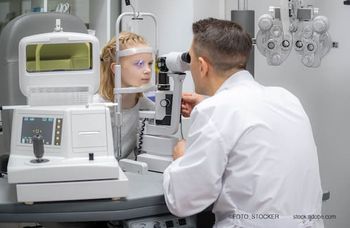
Glaucoma 360: Home tonometry - worth the pressure?
Robert L. Stamper, MD, discusses some of the devices in development for measuring patients' intraocular pressure outside of doctors' office hours in his presentation at Glaucoma Research Foundation's annual Glaucoma Symposium.
Robert L. Stamper, MD, discusses some of the devices in development for measuring patients' intraocular pressure outside of doctors' office hours in his presentation at Glaucoma Research Foundation's annual Glaucoma Symposium with Sheryl Stevenson, group editorial director, Ophthalmology Times®.
Editor's note: This transcript has been edited for clarity.
Sheryl Stevenson: Dr. Stamper, thank you so much for joining us at this year's Glaucoma 360 meeting. We're so excited to hear about your presentation, cleverly titled, "Home tonometry: Worth the pressure?" Could you tell us a little bit more about your talk?
Robert L. Stamper, MD: We measure intraocular pressure when patients come in with glaucoma, anywhere between 2 and 4 times a year. That's about 10 seconds of measurement of the physiologic process that's going on 24/7 every day and night of their lives. Our sampling error is pretty huge, somewhere around 1 in 500,000—in one of my calculations anyway.
We often feel the need to get measurements of eye pressure outside of office hours. In fact, we know that more than 50% of the elevation of intraocular pressure occurs outside regular doctor's office hours. There has been a movement in recent years to try to find ways to measure intraocular pressures. We have some of our tonometers that are portable and can be used by patients, but they're not so easy to learn and also have some potential errors. Some of them need anesthetic drops, which are not good to give to patients because they can be abused. Those that don't require drops aren't always easy to use for the patients.
We're looking for new ways to measure pressure. One of those is a contact lens that measures the electrical changes of the cornea as it changes its shape. This contact lens then is connected by an antenna that fits around the eye to a recording box that the patient wears for 24 hours. It doesn't measure intraocular pressure directly, but it measures a representative of pressure so we at least can tell that at 7 o'clock at night, there's a peak in the pressure. We may not know exactly what that peak is, or how much it is. That device is called the Triggerfish. It's FDA approved. It's available, but it's kind of cumbersome to use and insurance companies aren't paying for it. So patients. It's not used very commonly.
Another device that's in development that's not FDA approved is another kind of contact lens where you can read the intraocular pressure off the lens. The patient uses a cell phone to take a picture of the lens at various times and then can send that picture to the doctor or the company and then they can translate that into intraocular pressure. That's coming down the pike. Human studies are just beginning.
There is a local company near here that does have an implantable device that looks about the size of a grain of rice. It can be implanted inside the eye. It has its own battery that can be recharged remotely. It electronically sends signals to a cell phone that record the intraocular pressure. That device is still experimental, but it's been shown to work really well in animals, at least thus far. So it's coming down the pike.
Right now I don't think we have anything that's really universally helpful. I do think that there are some patients even now that could benefit from even the imperfect technology that we have. Those are patients with normal-tension glaucoma who are going downhill and yet their pressures in the office seem to be good, or people with other kinds of glaucoma whose pressures in the office are good and yet their visual fields are getting worse. If we see that their pressures are spiking outside of office hours, we can add more medications or resort to surgery, something to do that would reduce the intraocular pressure, and therefore the loss of vision. That's the hope of home tonometry. I hope that some of these newer devices will allow us to use it in many more types of patients.
Stevenson: Thank you for that summation. There's certainly a lot of options that are beneficial to patients these days. That can only be a good thing. That's really great to hear. Is there anything else in your talk that you wanted, a take-home point or anything you wanted to share?
Stamper: The take-home point, I believe, is that the technology we have now is imperfect at best. It's only useful in perhaps a limited number of patients but still useful. We're hoping that newer devices that are in the pipeline may be even more useful in a broader range of patients.
Newsletter
Don’t miss out—get Ophthalmology Times updates on the latest clinical advancements and expert interviews, straight to your inbox.


















































.png)


